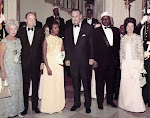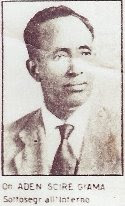Nairobi, Kenya - The assailants grabbed the Somali sports writer, bound his hands behind his back, and proceeded to torture him. They later dumped his body outside a Mogadishu restaurant, placing the severed head on his chest. Another reporter was gunned down a day later as he walked to work, bringing to 15 the number of journalists killed in Somalia this year in an unprecedented spate of violence targeting the press.
Many media members have fled the country after the attacks, which have occurred amid signs the conflict is abating. Somalia is the most dangerous place in Africa to work for the press, according to the Committee to Protect Journalists. But in neighbouring Kenya, young Somali refugees are training to become journalists and plan to return to the country, despite the increasing dangers. "Everyone will die one day," Abdiladiif Ali declares in a small room he shares with two other Somalis in his new home in Nairobi. "Whether I am in Somalia or in a safer place, still death will meet me."
Ali says he intends to become "a very famous journalist, a household name".
"There is so much violence against journalists in Somalia, but that will never stop me from pursuing my career," he vows.
One mattress is pushed against the wall to create floor space for daily prayers. A small TV sits in the corner, an extra cost the roommates share to watch the news.
Ali, 22, is as old as Somalia's conflict. He fled his hometown of Mogadishu in 2007 and arrived in Nairobi last year, after spending four years in Kenya's Dadaab refugee camp. He now attends Al-Imra Institute of Language and Journalism in Eastleigh, a Somali neighbourhood in the capital's eastern suburbs.
At Al-Imra, Ali's class is full of students aspiring to become journalists, despite the perils of the profession. Six Somali journalists were killed in September alone. With three months remaining, 2012 already stands as the deadliest year for the Somali press.
Journalists in exile
On a Tuesday evening in Eastleigh, journalists gathered in a reception hall normally used to celebrate weddings. Under purple and white tulle and strings of flickering lights, they honoured their colleagues lost last month.
Outside the door, a guard ran his security wand up and down entering guests. Even in exile, Somali journalists receive regular threats.
Ali served as the master of ceremonies, inviting reporters from Somali radio stations, websites and satellite television channels to share their condolences. Because of the persecution journalists face at home, Somali media have flourished in the Kenyan capital.
"How could you dare go back to a town where the journalist is a target?" asks Mohamed Osman, the founder of Al-Imra Institute of Language and Journalism, and chairman of the Somali Exiled Journalists Association. "No one knows why we are killed and who is killing the journalists."
In 2007, while Osman was working in Mogadishu at HornAfrik Radio - Somalia's first independent broadcaster - his producer, Mahad Ahmed Elmi, was shot dead outside of their studio. Later that day, an improvised explosive device killed Ali Sharmarke, director of HornAfrik, as he drove home from Elmi's funeral. Osman fled Somalia following the attacks.
Although al-Shabab was suspected to be behind Elmi and Sharmarke’s murders, no investigation followed.
Failure to investigate crimes against journalists cannot be explained by lack of capacity. Somali government forces are often implicated in censoring and targeting journalists. ..read more,,Threats fail to deter young Somali reporters - Features - Al Jazeera English




.jpg)











No comments:
Post a Comment